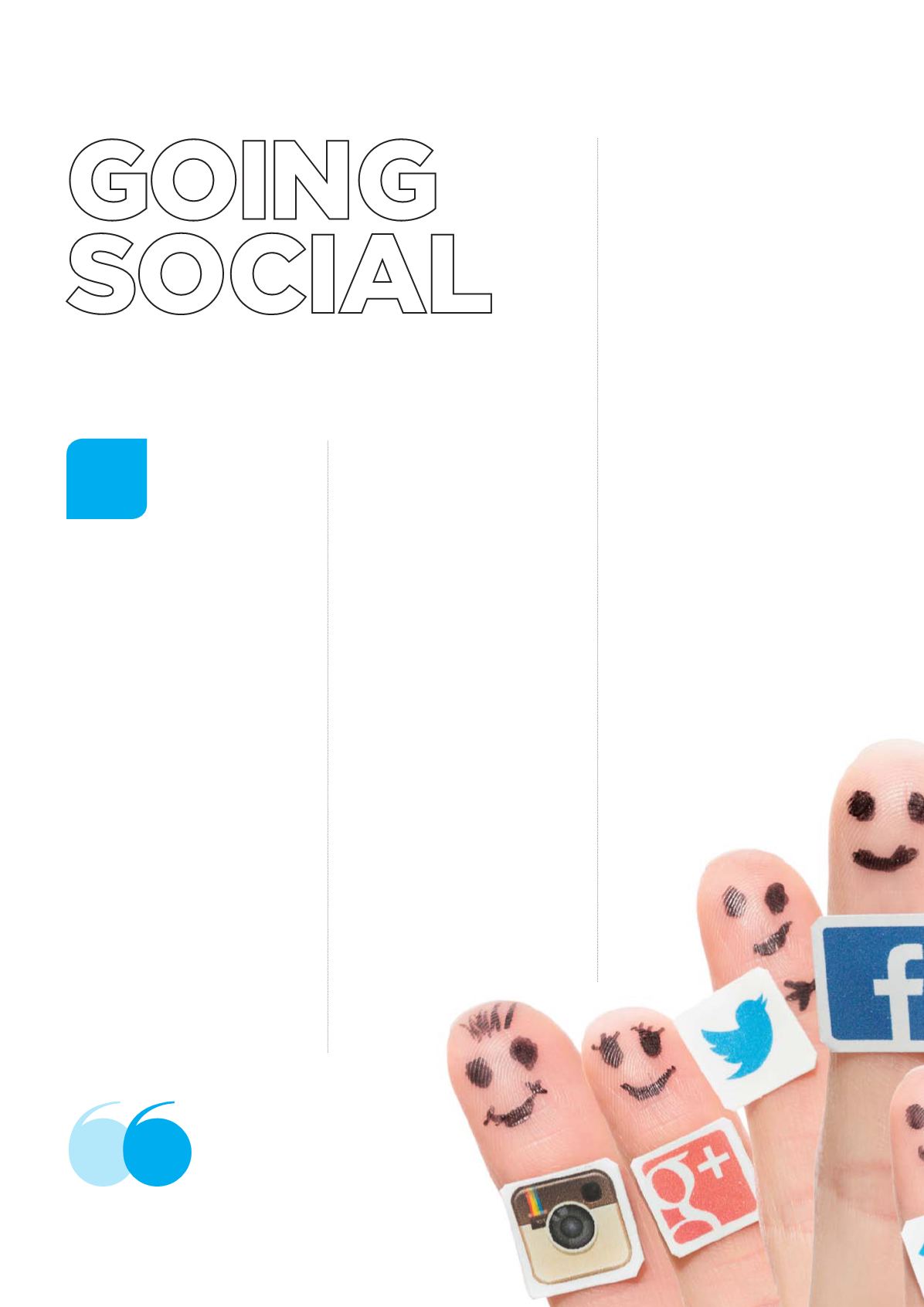
66
earlyyears.teachwire.net
Facebook, Twitter and the like are valuable
marketing tools, but only if you use them
properly, says
Kate Tyler
...
ocial media has been
around a good few years
now, but it can still cause
some confusion. Using
Facebook personally is
one thing, but knowing which networks
to use and how to get the best results
for your setting can be a different matter
entirely. If you don’t know why you’re
using social media, you may as well not
bother, so being focused on who you
want to connect with and what you want
to achieve are vital for success.
To set you on your way, here’s a
quick guide to the benefits and pitfalls of
each network...
FACEBOOK
Facebook is the most popular social
network and the most powerful for
nurseries. Having a Facebook page
or group will allow you to post status
updates, share photos and videos, and
create events with all the people who
like the page. It’s a fantastic, highly visual
communications tool that can be used
to keep your current parents up to date
whilst attracting potential parents with
the range of activities you showcase.
Good for:
D
Sharing photos.
D
Highlighting the wide range of
activities you offer.
D
Communicating with parents. Ofsted
expects parents to be included and
well-informed, and Facebook is great
for making this happen.
D
Promoting the nursery.
Safety tip:
D
Make sure you have written consent
from parents to use children’s images
on social networks.
D
Avoid using children’s names when
you post pictures and stories.
TWITTER
Twitter continues to attract new users
and is unrivalled for breaking news,
both locally and nationally. It’s the only
social network to post all updates (text,
photo or video) in real time, which
makes it great for sharing news about
what you’ve done that day or an event
happening soon. With tweets limited to
140 characters, it’s short and sweet, and
quite fast paced – ideal for a ‘little-and-
often’ approach.
Good for:
D
Breaking news and real-time event
coverage.
D
Bite-sized tips and ideas.
D
Quick updates.
D
Sharing links.
D
Connecting with other organisations,
locally and nationally.
S
Safety tip:
D
Find out if your staff have Twitter
profiles and monitor them.
D
As with all the networks, make sure you
have consent to share images.
PINTEREST
Pinterest is intended to be a virtual
pinboard for all the things you love. People
create ‘boards’ based on different themes,
and pin images onto each board. It’s a
great way of making your setting visual
and sharing ideas and inspiration.
Good for:
D
Influencing and inspiring.
D
Showing images from the nursery that
drive traffic back to your website.
D
Showing what ideas and values are
important to the nursery (e.g. creating
a board on Outdoor Play or Favourite
Books, etc.).
D
Targeting parents (mothers especially).
D
Busy nurseries – the pins don’t have a
time/date attached, so you don’t need
to be active on it every day
Safety tip:
D
Make sure all staff are clear on your
values and expectations if you give
them permission to pin images.
YOUTUBE
YouTube is the second largest search
engine in the world. It’s immensely
popular and affects your online
search rankings. Many people prefer
watching a short video to reading,
so creating video on a regular basis
can be a great way of promoting
your nursery.
Everyone involved
should enjoy what
social media can
offer; have fun with it!
GOING
SOCIAL


